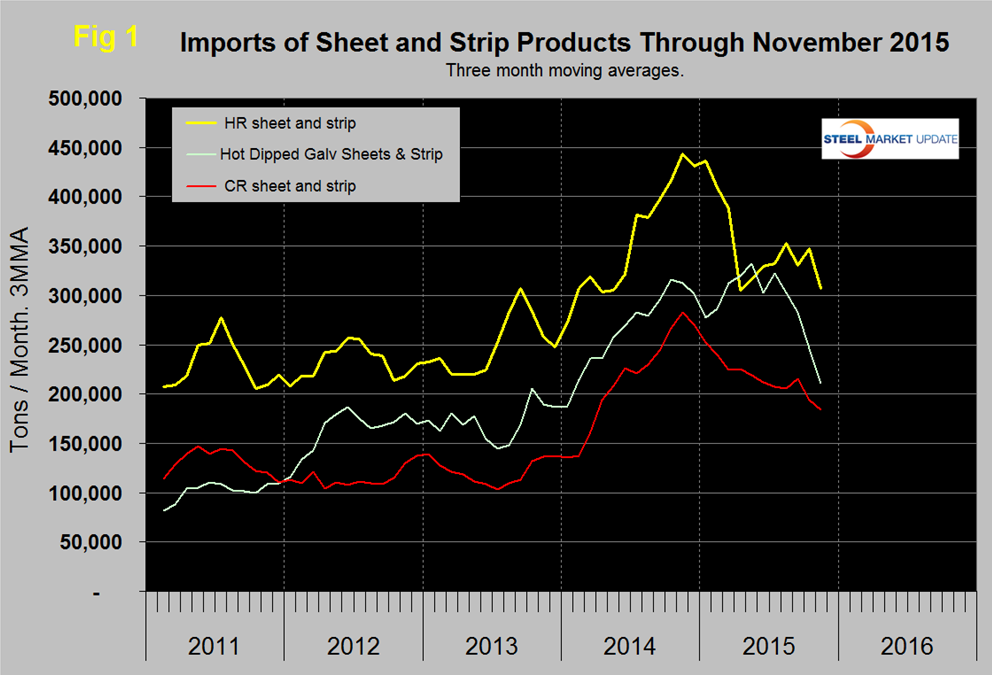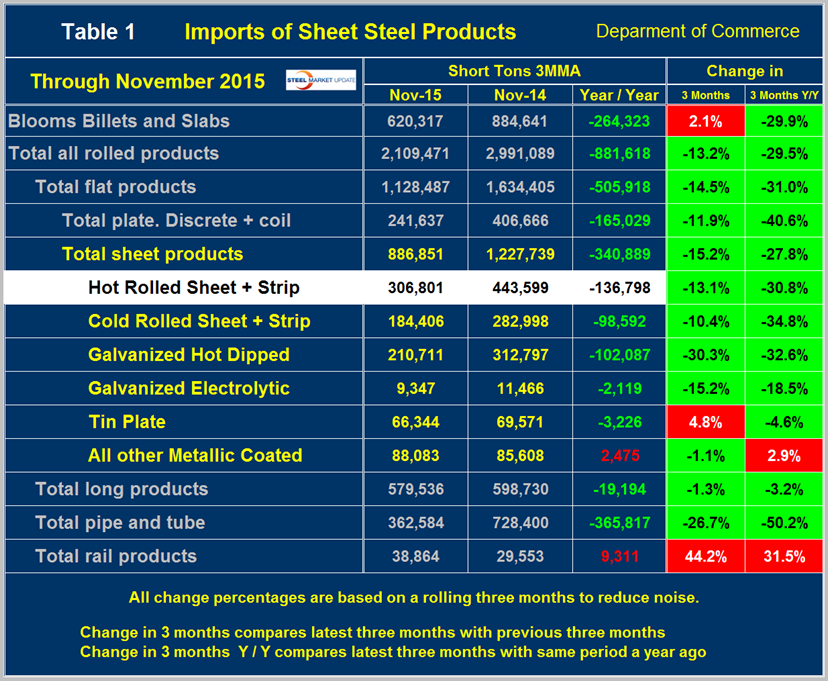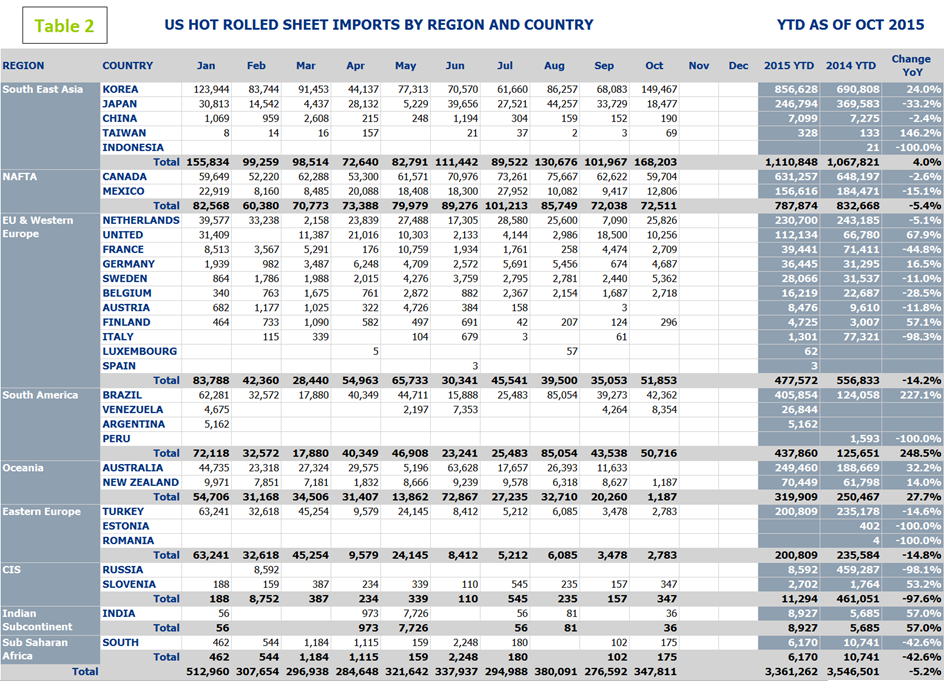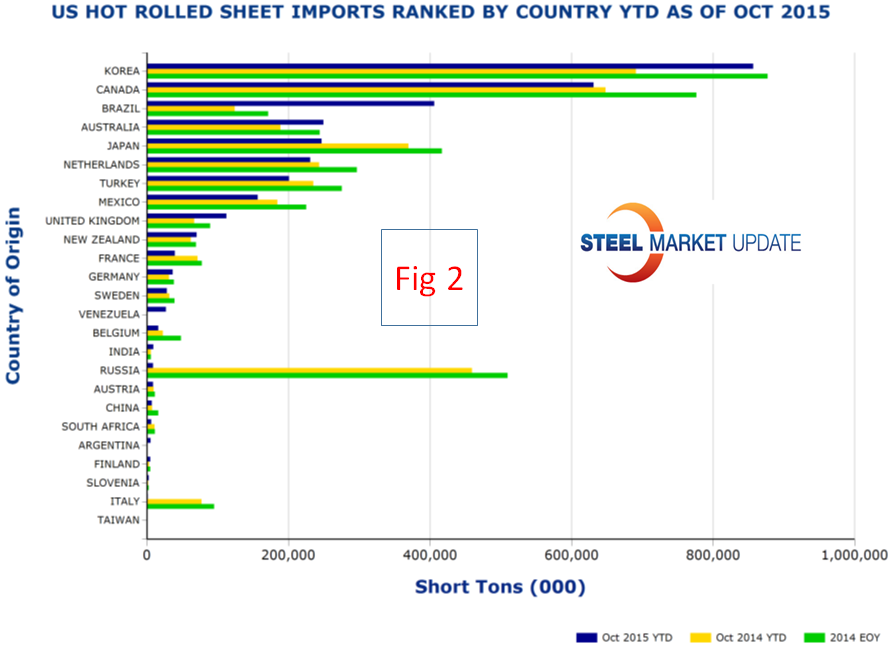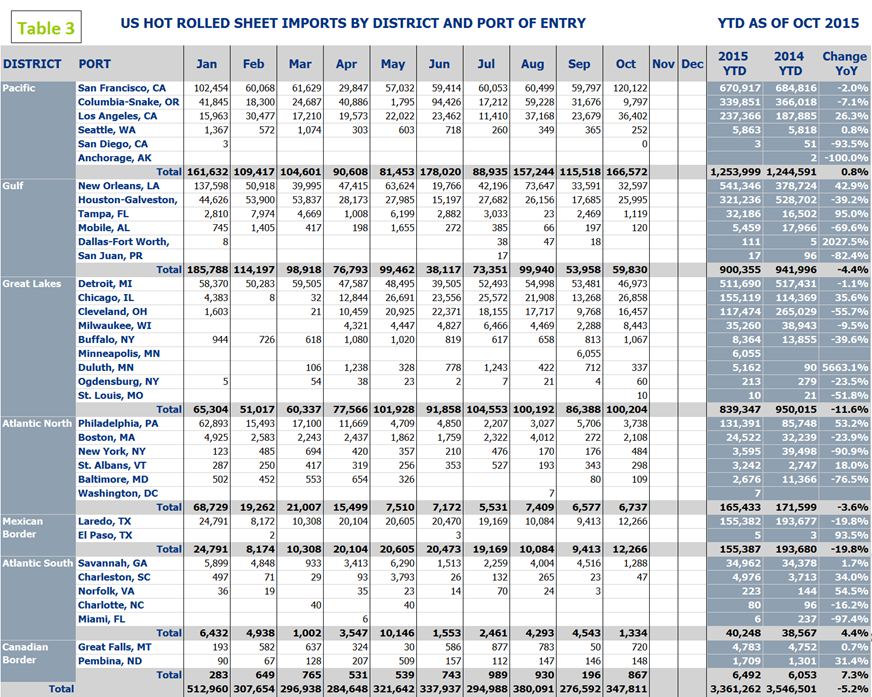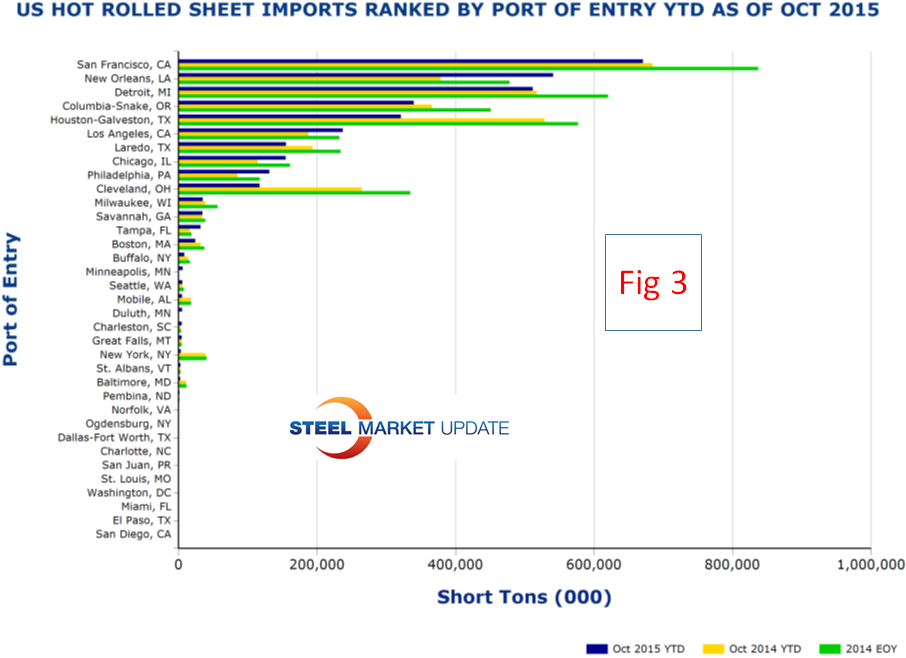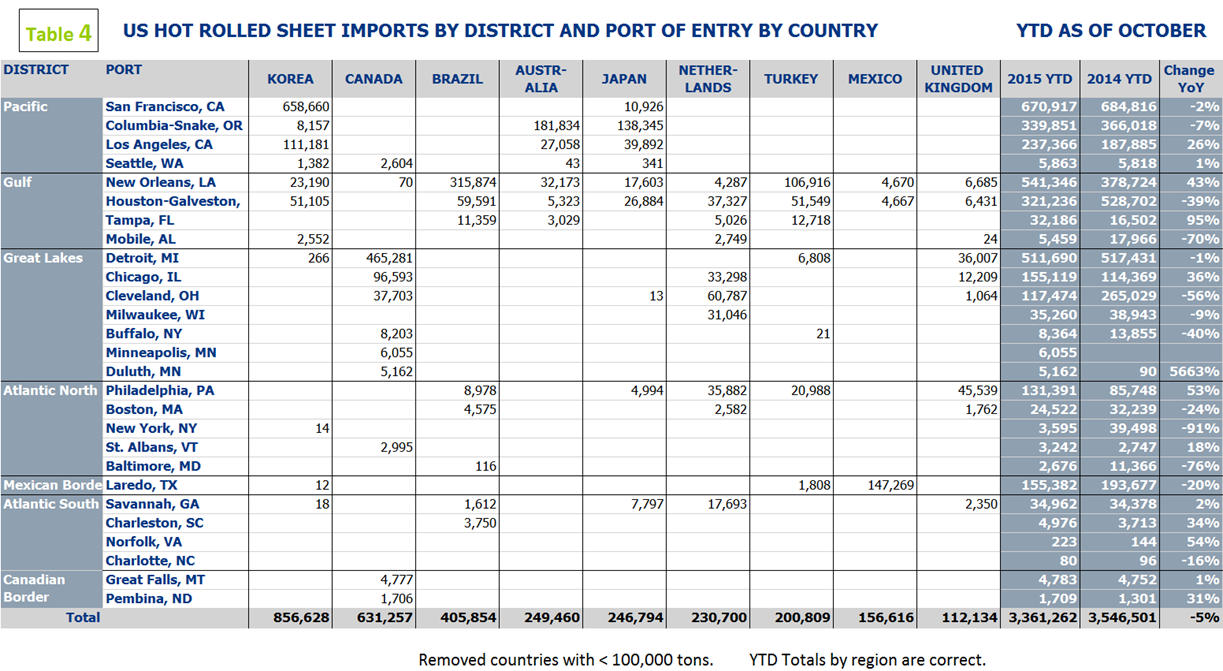Steel Products Prices North America

Detailed Import Report for Hot Rolled Sheet by Port and Country
Written by Peter Wright
December 14, 2015
This report is a detailed drill down into imports of hot band through October, beginning with the big picture and ending with exactly what came into a region of significance to your business and where it came from. SMU has developed a series of reports that cover hot rolled, cold rolled, HDG, other metallic coated (mainly Galvalume), coiled plate and semi-finished slabs. All volumes are in short tons. These reports can be found clicking on the analysis tab in the SMU website and then going to the Import/Export Data tab. At the bottom of that list will be our Imports by Port/Country (P). The “P” next to the heading means it is for Premium level customers. Reports for the other products listed above are in a computer generated format and a bit less comprehendible than what we present here but any subscriber wanting this fine level of detail can find it as described above.
![]() Figure 1 shows the long term picture of total hot band imports since January 2011 and includes November licenses.
Figure 1 shows the long term picture of total hot band imports since January 2011 and includes November licenses.
Also shown on this graph are the volumes of cold rolled and HDG for comparison. Table 1 shrinks the time comparison to one year and shows that YTD total imports are down by 137,000 tons compared to this time in 2014.
Comparing three months through November year over year, imports are down by 30.8 percent and comparing three months through November with three months through August imports are down by 13.1 percent.
All the following data in this report is final through October.
Table 2 drills down to tons by country and subtotaled by global source region by month for the first 10 months of 2015.
South East Asia had the highest regional total with Korea being by far the most prolific source within that region. Tonnage from SE Asia was up by 4.0 percent YTD and from NAFTA, the second largest source was down by 5.4 percent.
Figure 2 shows the YTD tonnage by country compared to the same period in 2014 and the final total for 2014 for comparison.
Korea and Brazil have had the largest proportional increase this year and the Brazilian tonnage is already well over double the 2014 total.
Table 3 shows the monthly tonnage by port of entry this year with sub-totals by US geographical region.
The Pacific region received the most tonnage YTD with San Francisco being the most popular port of entry. In October the tons into San Francisco were the highest of the year and for that region as a whole the tonnage YTD was up by 0.8 percent.
Figure 3 shows tons by port YTD 2015 and for the same period in 2014 and the final total for 2014 by country for comparison.
The tonnage through New Orleans this year is well above 2014 and in 10 months has exceeded the tonnage for all of 2014. Houston and Cleveland will be well down on 2014 by the time this year is closed out.
Table 4 puts it all together by showing the total tons that came into a port or region broken down into the source country for the first ten months of 2015.
Countries with <100,000 tons this year and ports with minimal tonnage have been removed from this table to make it more comprehendible but the totals are all correct.
Suggestions on how to read this chart are as follows: If Philadelphia happens to be your nearest port of entry you can see that 131,000 tons came into your area this year which was an increase of 53 percent over last year through October. The United Kingdom was the major source with almost 46,000 tons. If you happen to be interested in where a certain countries volume was entering the US we can use Brazil as an example. Not surprisingly the bulk of their material came in through the Gulf ports but some made it up the East Coast with tonnage into Philadelphia, Boston, Savannah and Charleston.
Half-truths (not to mention outright misleading statements) about import volume and source float around the industry on a continuous basis. Our intent is to shine a light on exactly what is going on in a subscriber’s neighborhood.

Peter Wright
Read more from Peter WrightLatest in Steel Products Prices North America

CRU: Q3 will be the lowest point in current sheet price cycle
CRU Principal Analyst Shankhadeep Mukherjee expects a restocking cycle for steel sheet products in most parts of the world due to either low inventories or seasonally stronger demand.

CRU: US rebar and wire rod prices rise alongside S232 increase
CRU Senior Steel Analyst Alexandra Anderson discusses current market and pricing dynamics for long steel products in the US.

SMU Price Ranges: Sheet and plate steady ahead of Independence Day
Sheet and plate prices were little changed in the shortened week ahead of Independence Day, according to SMU’s latest check of the market.

Nucor maintains plate prices, opens August order book
Nucor aims to keep plate prices flat again with the opening of its August order book.

Nucor CSP remains level at $900/ton
Nucor maintained its weekly list price for hot-rolled (HR) coil this week, following two consecutive increases.

